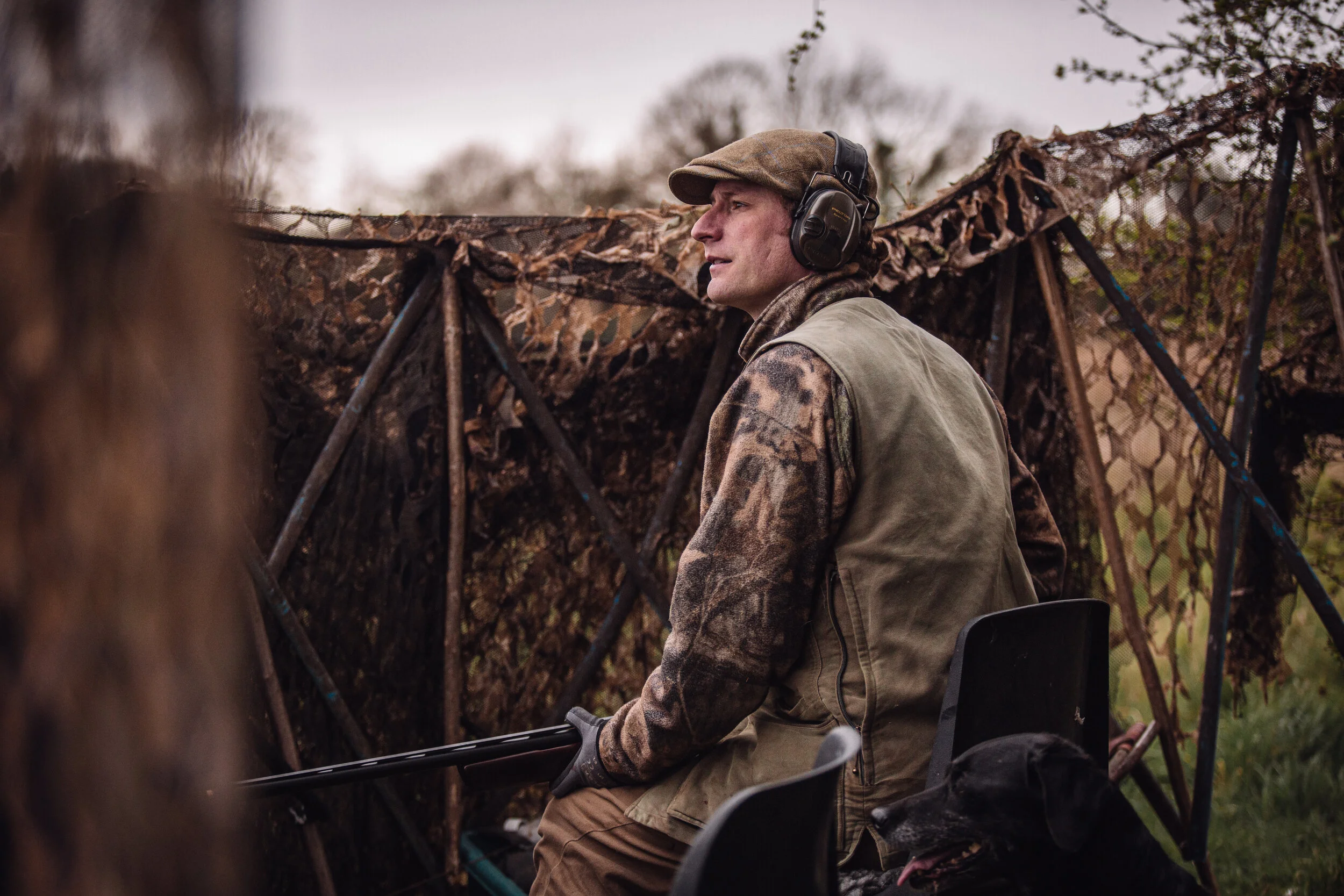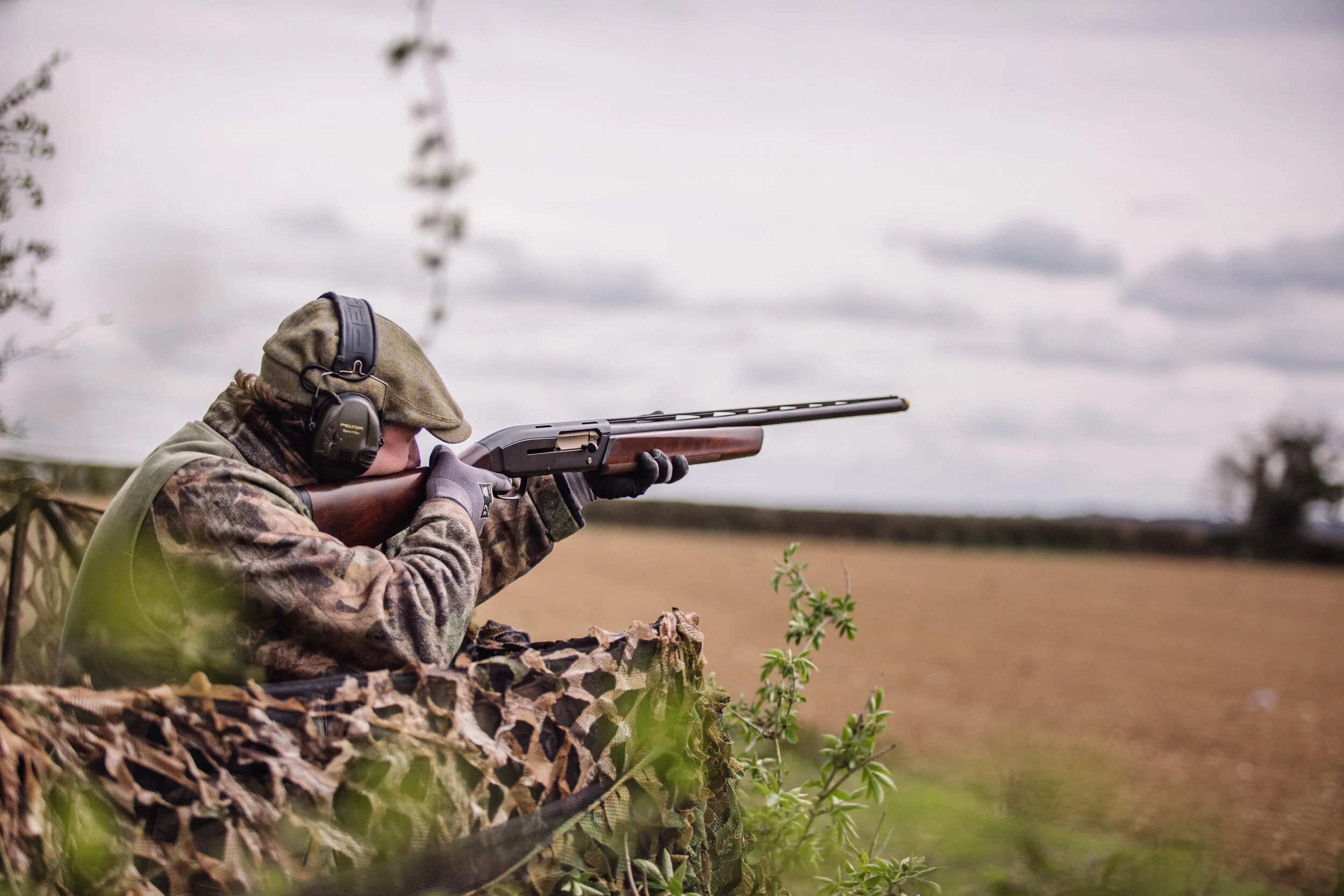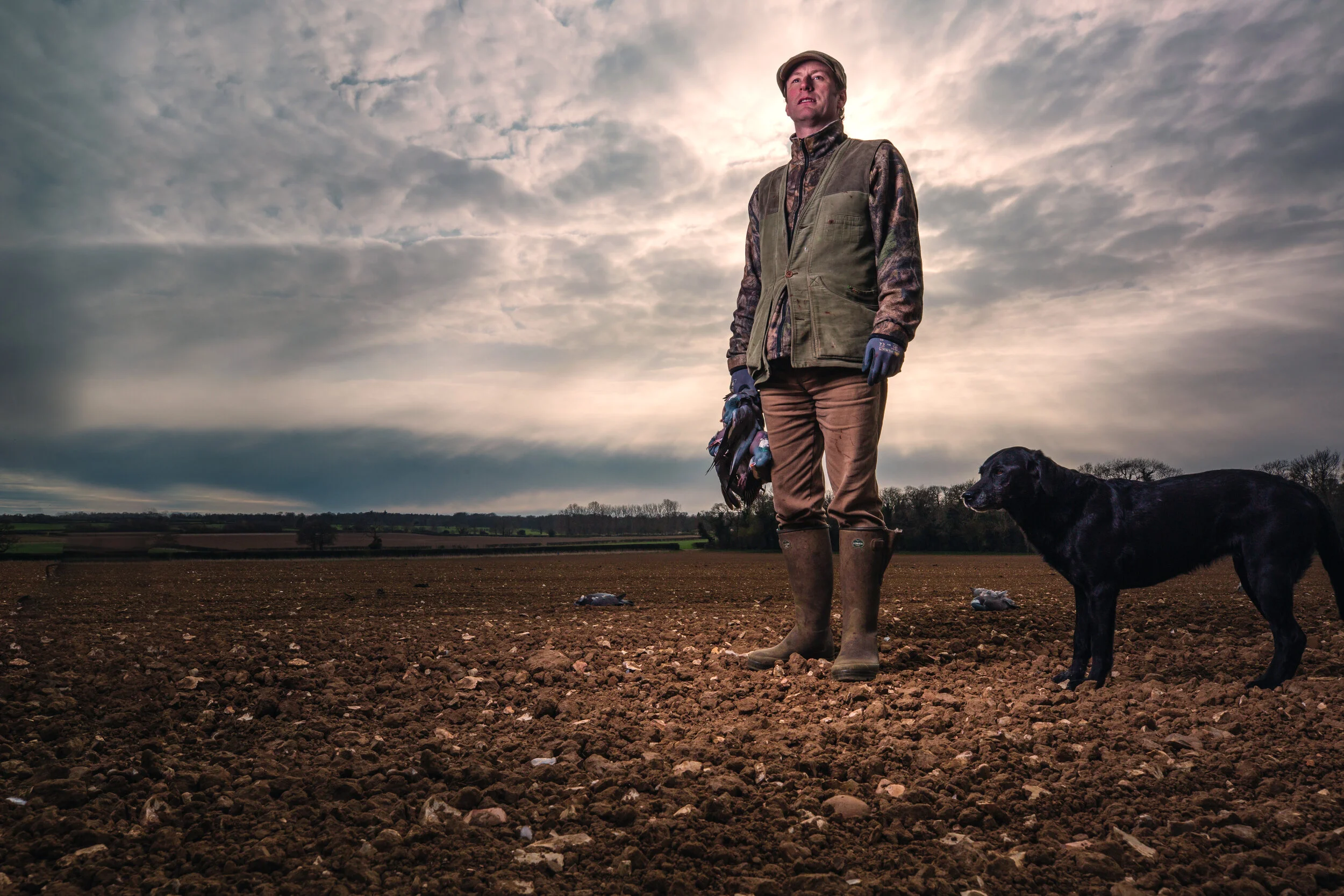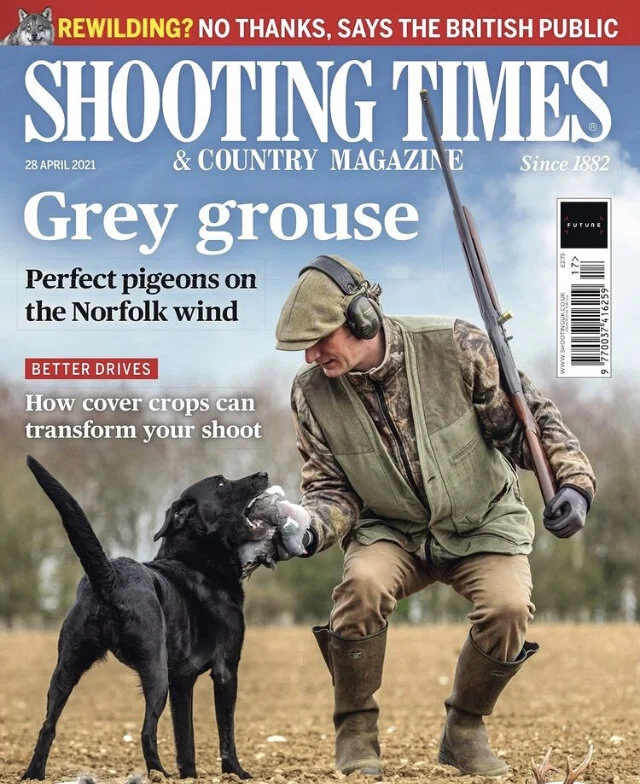FLIGHTLINES & OLD FOES
Hatred might be too strong, but it was pretty obvious that Wally didn't like me, and yet he was to go on to teach me my most valuable lesson as a pigeon shooter. At the time I was 16 and he was something over 70. The summer before we both worked 'rougeing' - pulling weeds out of sugar beet - on the same farm. In a clash of generations and backgrounds, it seemed he never had a good word for any of us youngsters in the rougeing gang. This was the Spring though before another hot summer spent bleeding from our soft hands as we pulled bolting beet out of ground baked solid. Unlike ours, Wally’s hands never split. It was one of the many differences between us. Another was my habit of asking permission to shoot a field. Wally felt he didn’t need to ask permission and with no oversight, a clash was inevitable. He had in the past felt very similarly about the pheasant drives and the headkeeper and shoot owner were probably relieved to have got that under control by allowing him free rein to shoot pigeons in the close season.
We had both zeroed in on the same field of drilled barley, ‘Brick Kiln's' only I got there a little before him. This had done nothing to improve his opinion of me as I watched him menacingly march across the field but then when he got to me, he did something unexpected: he started giving me useful advice. He never gave anything away for free so this puzzled me. I moved the hide further up the hedge and altered my plastic decoys as he suggested, then watched him retire to the other end of the field. He had no kit with him other than his trademark roll-up glued to his bottom lip, his old side by side, two belts of cartridges and a game bag with some extra cartridges in it. He shot one pigeon as it flushed out of a solitary oak tree on his way to the other side of the field – this was his only decoy. He set it out under a single tree on the other side of the field and shot 84 pigeons that afternoon gradually building his pattern as he went. I didn't break double figures.
Wally knew his subject and he had learned it from a lifetime of observation. Looking back now I believe the reason he offered his advice was that he knew I was nowhere near a flight line and that he was about to teach me a lesson. It was the only time I ever saw him smile.
He’s dead now, of course, the ever-present roll-up made sure of that, but I was reminded of Wally as I watched this field of drilled barley 28 years later. I was remembering the lesson I learned that day - that finding the flight line is crucial to decoying.
On this field, ‘Baldwin’s’, I now had the advantage that Wally had over me all those years ago - experience of shooting the same estate for decades and the bank of knowledge that comes with it. I knew that the old marl pit on the edge of the wood between it and the game cover was going to be the flight line with the wind from the North East. Even though this estate has changed to organic farming and dairy over the recent years and pigeons are less of an issue as a consequence, a field of drilled barley can still be a significant draw to both corvids and pigeons. A similar field lay behind me which also had their attention, but Baldwin's was closer to the deer park where significant numbers of pigeon loaf before heading out to feed. They would almost certainly look to fly over the pit to get to the other drilled field and if they didn’t decoy then high overhead crossing shots would be my own private pheasant drive.
There wasn’t a bird on it when I arrived shortly before midday. This surprised me until I found the reason why. A scattering of white breast feathers across the drill, elongated by the cold wind was the evidence and my immediate thought was that I might not be the first to shoot it. Forensic inspection of a fresh pigeon's remains settled my nerves - a Sparrowhawk had done a reasonable service keeping birds off the field while it breakfasted.
I use a mixture of dead birds and homemade, wind-sock style decoys, replacing the artificials with the freshly dead as I go. The decoys are simply a black foam sheet cut to silhouette with a stitched builder’s breathable membrane forming the sock. (Learning to thread a sewing machine to make them was about as much frustration as I wish to experience.) A sprung steel rod gives the movement and the simple design allows you to vary movement according to wind strength. The all-important white collar is a short length of 32mm PVC waste pipe split and spliced through the foam. I also like to preserve the white collars on dead pigeons by carrying them by the wings, not the neck. It may do nothing but it is something I’ve always done. It also helps me carry more in each hand. I rarely think too hard about a pattern preferring a more natural look of two amorphous blobs with a gap in the middle.
With the hide up and decoys out I was about to discover if my certainty was misplaced. Pigeons can be unpredictable, especially on drillings. If they feel they have finished all the available food they will move on swiftly and if that is the day you decide to shoot it can be a humbling experience.
The pigeons were worryingly cagey with many of the early birds passing just wide of my effective range and it prompted the usual in-hide process of critical self-assessment. Were the artificial decoys contrasting with the dead birds? I moved all the dead birds to the blob nearest the park to test and then re-assess. They weren’t of course, but there are times that doing something feels better than doing nothing. A sunny morning morphed into a cloudy and cold afternoon and the birds came onto feed. Although my confidence in the flight line was borne out, my lack of time (having recently gone back to work) properly to watch the field meant that I was only later to find out that the afternoon was their preferred feeding time. Reconnaissance is not just finding the right field; it's finding the right line on the right field and at the right time of day.
A few long passing shots to both left and right restored my faith in 34g 3 High-Performance steel (a lack of trigger time due to Corvid causing a noticeable drop in form when roost shooting) and gradually the counter wheel began to click round. Then it happened. The birds shot had all gone into the decoy pattern replacing all the homemade decoys. I check the time. It was half-past two and a single pigeon came high across the belt at the bottom of the field that ran up to the Headkeeper’s house. At 300 yards it gave a few short wing beats and a shake of the tail and even at that distance I could see it would decoy. It sailed straight into the gap, never once looking like making any other decision and as it flared and turned to the right to land I stopped the gun and fluffed the shot. The dog looked disappointed as the words used had nothing to do with retrieving (although she’s heard them many times before) but that’s decoying: a series of satisfying long birds followed by a drop in focus on the simplest of shots. The confidence shown by this one bird was the indicator that they had switched on to feed and a period followed which is what we as decoyers look for - a consistent stream of singles, pairs and trios heading straight down the flightpath you have identified and into range. I had been without my semi-automatic since sending it away for ‘Cerakoting’ black on the barrel and action, and bronze on the bolt and lifter after years of mud and sand have taken their toll.
It felt so familiar back in my hands and with the consistent stream of birds the shooting felt effortless and began to flow. It didn’t last though, it never can, but while it does there is nowhere we pigeon shooters would rather be. It seems it can stop on spring days almost as abruptly as it starts and this brief period of the pigeon shooter's year is sandwiched between the stern test of roost shooting and the frustration of birds moving onto to eat early ash buds. It seems somehow the purest form of the decoyer’s art and needs guile and patience rather than gadgets and batteries.






